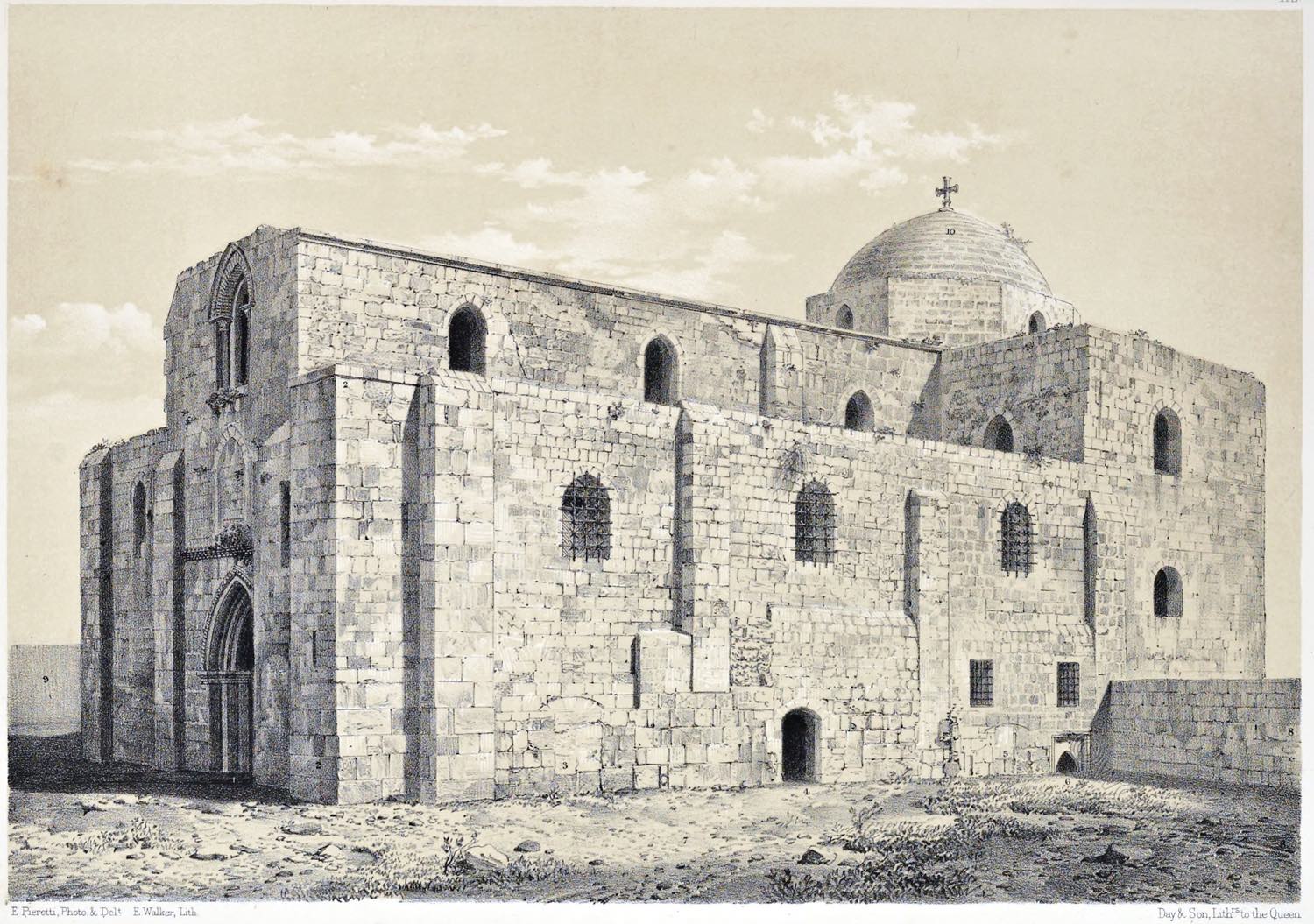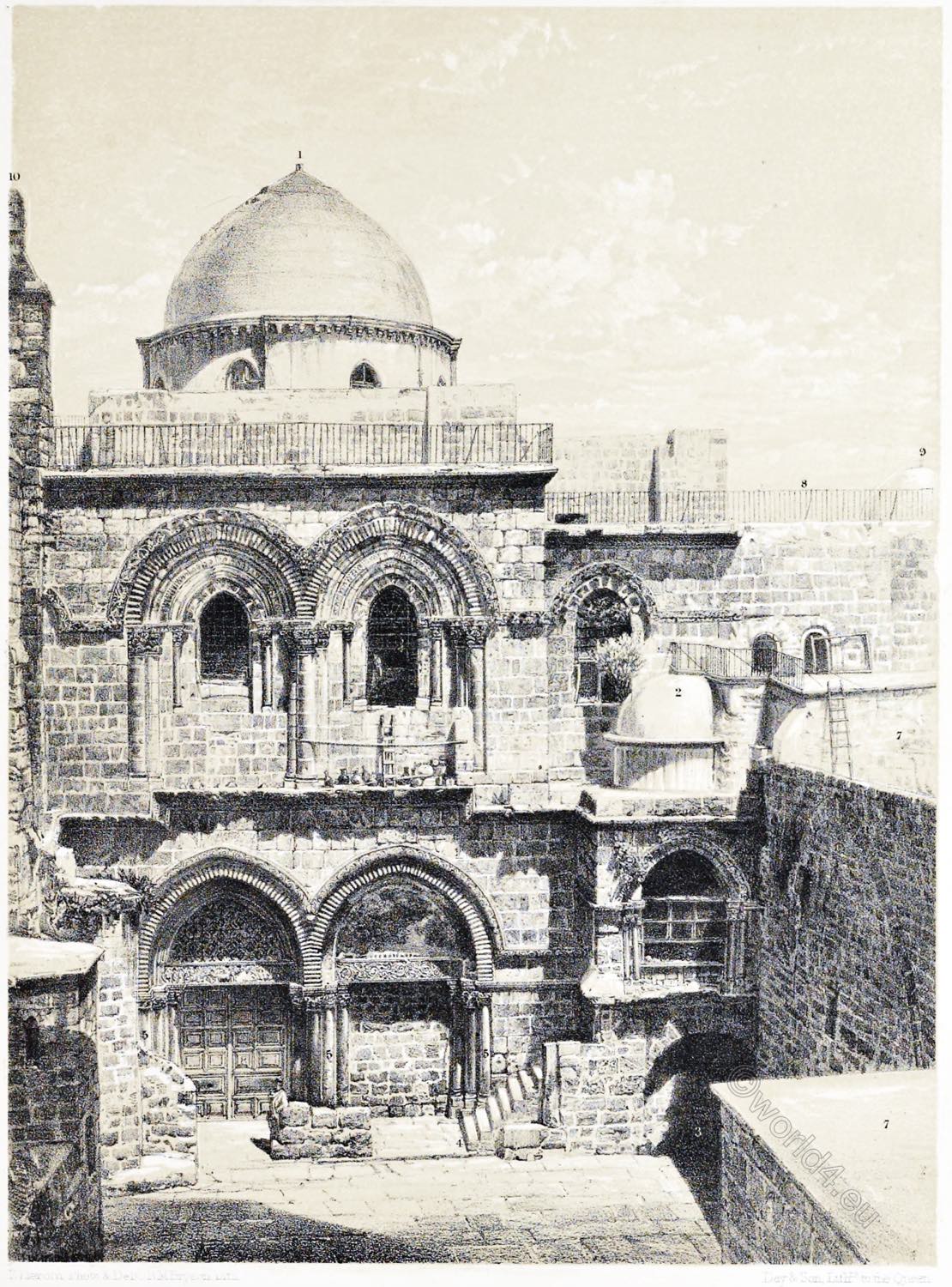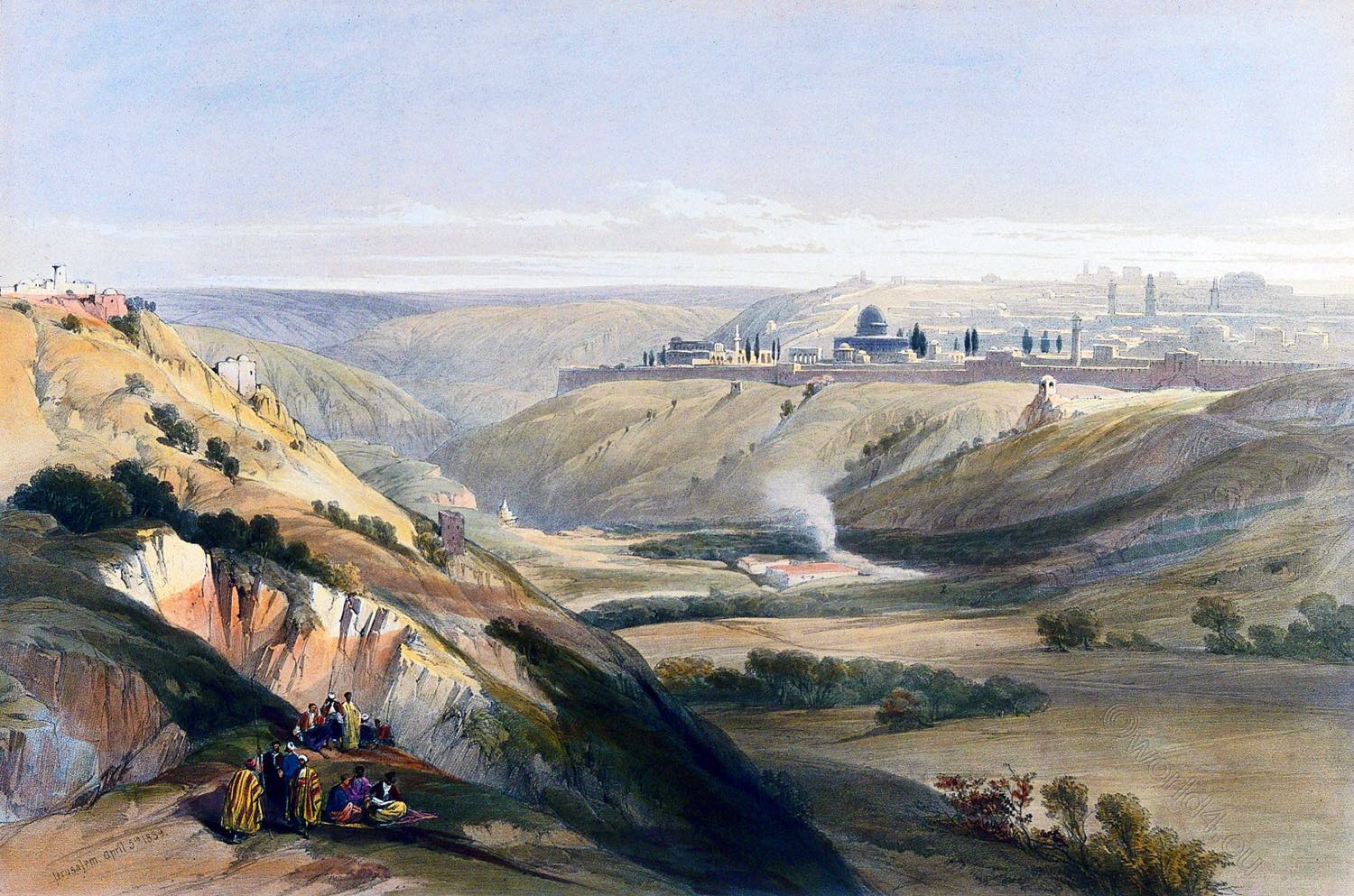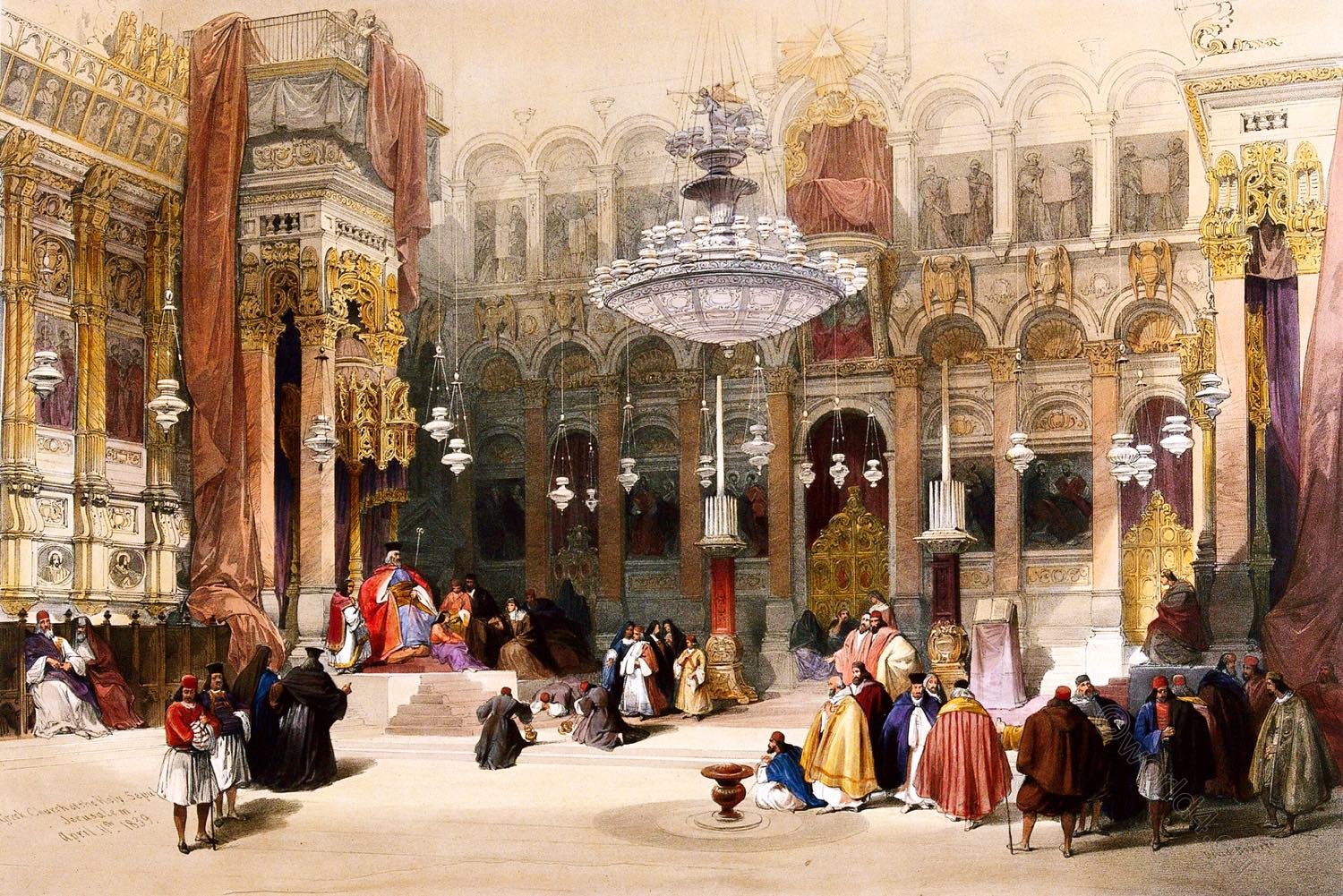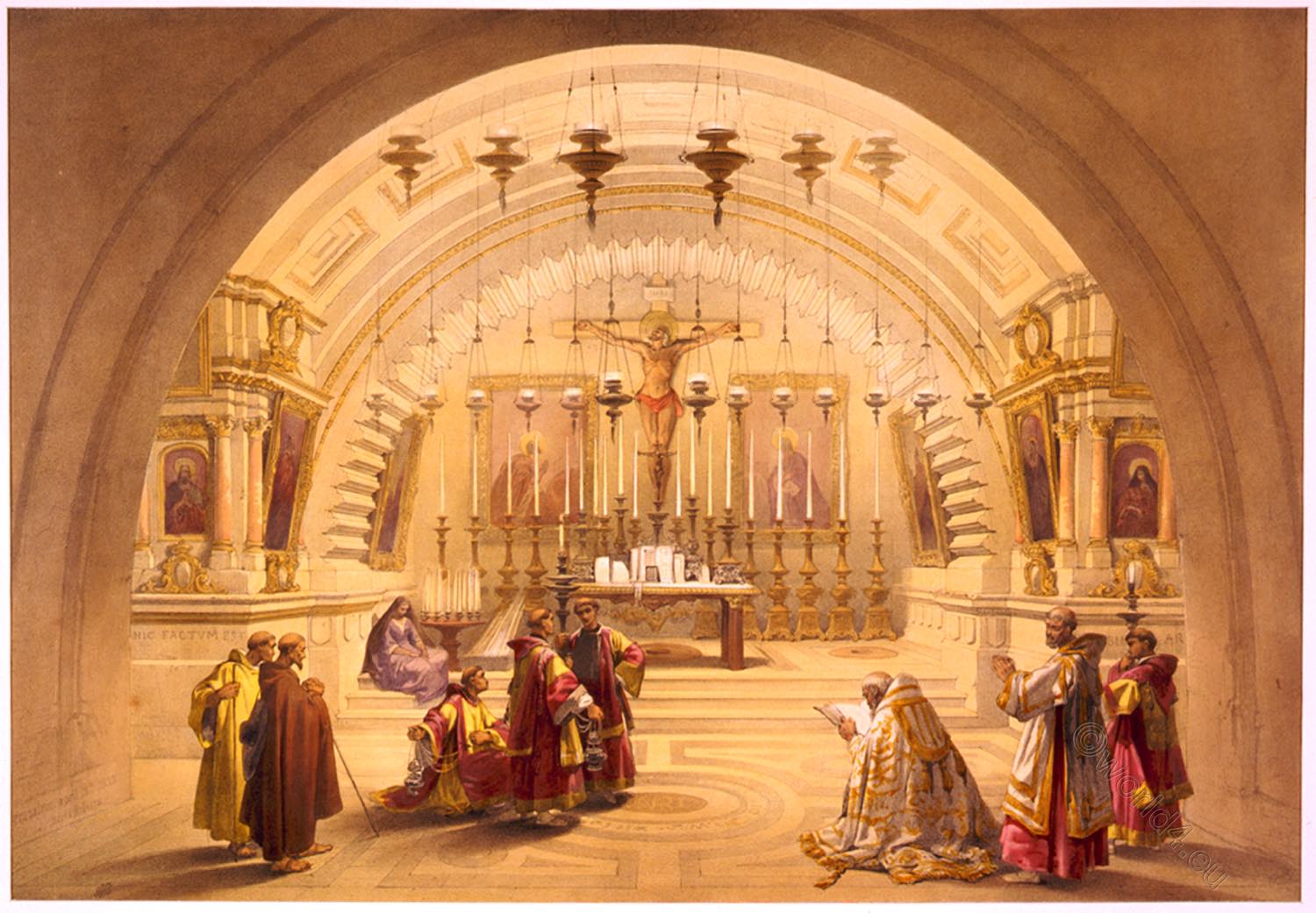
Calvary, or Golgotha is the name used today for a site outside Jerusalem in antiquity that has not yet been clearly identified. According to the New Testament Gospels, Jesus of Nazareth was crucified there.
CALVARY.
by David Roberts
The history of the building erected on the site of the Crucifixion has given rise to long disquisitions, from the days of Eusebius to our own.
But in limits like those of the present work, we must content our selves with conclusions. In the year 326, Helena, the mother of the great Constantine, ordered the erection of Churches at Bethlehem and on the Mount of Olives, on the presumed sites of the Nativity and the Ascension.
The strong interest excited by the Nicene Council probably revived religious subjects in the mind of a monarch, till then engrossed with the government of the civilized world; and he determined to distinguish himself by giving such honor as imperial munificence could give to the place of the Resurrection.
The pagans had intentionally desecrated the spot, and had even hidden it beneath an idol temple 1) Constantine commanded that a Church should be erected over the Holy Sepulchre.
A great assemblage of Bishops was convened, first at Tyre and afterwards at Jerusalem, to do honor to the dedication; 2) but the Church then erected seems to have had but little resemblance to that of the present day. We may well regret its loss, for it is recorded to have been of “great length and breadth,” and of “immense altitude, the interior covered with variegated marbles, the ceilings decorated with carved work, and the whole glittering with burnished gold.” 3)
The fifth century was the age of pilgrimages, and the journey to the Holy Sepulchre became a constant exercise of piety. But it received a formidable check from the Persian invasion under Chosroes II. *), who, after overrunning Syria, stormed Jerusalem in June of the year 614, slaying many thousands of the clergy and pilgrims, destroying the Churches, and burning the Holy Sepulchre.
*) Khosrow II also known as Khosrow Parviz is considered to be the last great Sasanian king
The Patriarch Zacharias, with multitudes of the people, was carried into captivity. 4) On the turning of the tide of war, Chosroes was pursued into his own dominions by the Greeks under Heraclius, when the Persian monarch was put to death by his own son; the Patriarch, after fourteen years of exile, was restored.
After various calamities under the Saracens, the Church of the Holy Sepulchre, though twice burned in the interval, was again opened in the year 1048, to the general rejoicing of Christendom. An impression, that in the eleventh century the Day of Judgment was at hand, poured immense crowds of pilgrims of every rank and from every soil into Palestine princes and nobles with retinues of armed followers, and sometimes with royal luxury, filled the roads of Europe on their way to Jerusalem.
Jerusalem, in the possession of the Crusaders for nearly the entire of the twelfth century, rose once more from its ruins. Calvary forms a portion of what is now termed the Holy Sepulchre. The spot is covered with a small chapel, in whose centre, under an altar, is shown an orifice encircled with gold, which is pointed out as that in which the Cross was fixed, while on each side are two similar orifices, for the crosses of the two male factors. The chapel is lighted with rich and massive lamps, which burn night and day.
We have taken it for granted, that this is the actual site of the Crucifixion; notwithstanding the known fact, that the Cross was raised outside the city; for, it seems singularly improbable that Calvary, which was an established place of public execution, should have been forgotten in the lapse of less than three centuries.
The city has considerably changed its position; and it is more likely that the walls should have been extended to Calvary, in some of those periods which were too disturbed for exact record, than that the mother of the Emperor, furnished with all the means of inquiry, and attended by the leading authorities, should have been totally deceived in the express object of her investigation.
But Calvary was the spot first sought for; and the only reason discoverable, why the present site should have been fixed on in preference to all others, is, that it was the true one.
1) Euseb. Vita Constan. iii. 26. 33 quoted by Robinson. 2) Euseb. Vita Constan. iv. 43. Sozomen, ii. 26. Tillemont, vii. 12. 3) Cyril, Hieros. e. xiv. 6. 4) Eutych. Annales, ii. 213.
Source: The Holy Land, Syria, Idumea, Arabia, Egypt, & Nubia, by David Roberts, George Croly, William Brockedon. London: Lithographed, printed and published by Day & Son, lithographers to the Queen. Cate Street, Lincoln’s Inn Fields, 1855.
Continuing
Discover more from World4 Costume Culture History
Subscribe to get the latest posts sent to your email.



